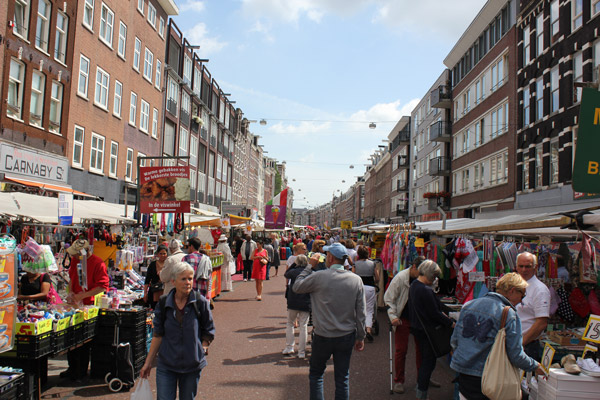Chris & Allyson vs. Europe (2013)
Amsterdam Day Four: Cheese in Volendam. Shoes in Markham. Windmills. The Red Light District.
Does your itinerary allow for a fourth day in Amsterdam? If so, then get out of town! The Dutch countryside is filled with Dutch heritage, showcasing the culture and industries that once made the Netherlands the most feared power in the Western world: cheese, wooden shoes, and windmills.
There are many tours that take you to the countryside, so just pick one. Look, let's stop kidding ourselves. You're a tourist. Just tour already. Here's one possible itinerary.
Cheese Making
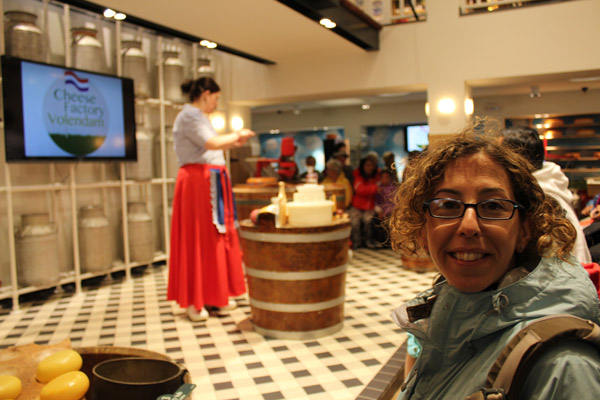
The cheese demonstration in Volendam.
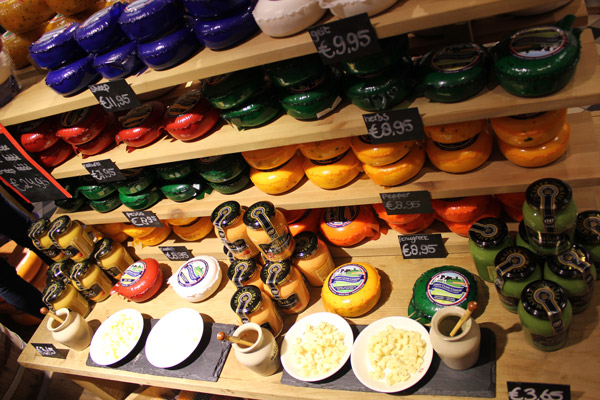
Is it a tourist trap? Yes, but it has cheese!
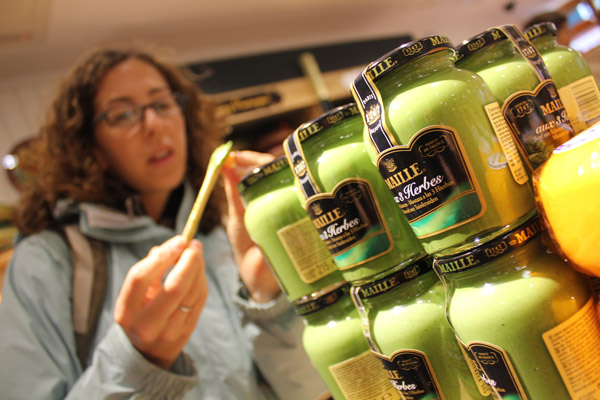
Beating the spread in Volendam.
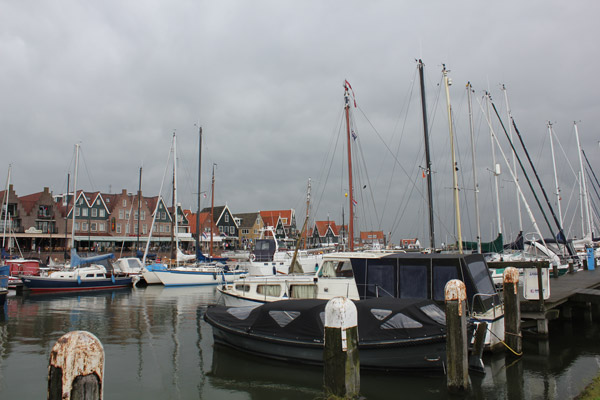
A walk around the harbor in Volendam.

Volendam in the rear-view mirror, taken from the Ij.
The village of Volendam is a link to Amesterdam's nautical past: It is the last fishing village on the IJsselmeer, a large lake that can be reached via a double-decker bus filled with dozens of people who speak different languages. The IJsselmeer was once part of the Zuiderzee, a salt-water offshoot of the North Atlantic. Periodic floods would devastate the land and people around the Zuiderzee, so the Dutch used their engineering prowess to tame it in the 20th century. Closed off from the ocean, the new IJsselmeer became a fresh-water lake, which dramatically changed the fishing industry. The people of Volendam continue to live in their idyllic town, with quaint cottages and narrow roads. They continue to fish for their livelihood. And they make ends meet with cheesemaking demonstrations. These demonstrations are conveniently located in a cheese store, so after your 15-minute presentation you will have 45 minutes to buy cheese. If you're not in the mood to spend 45 minutes buying cheese, go for a walk! The harbor at Volendam is charming, and the local cats will follow you around, possibly because you shoved free cheese samples in your pockets.
Shoe Making
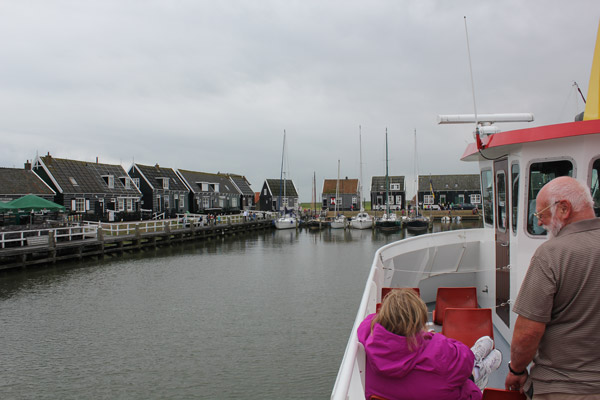
The harbor at Markham.
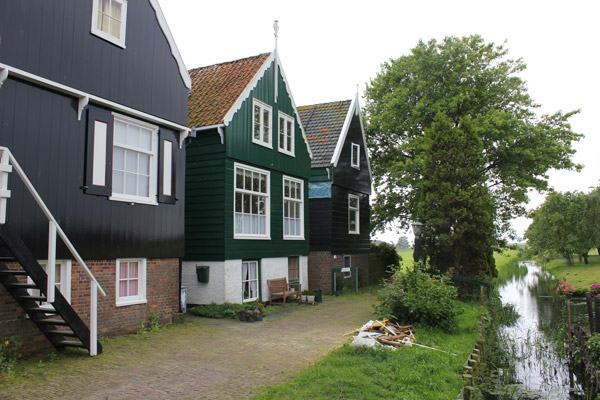
A peek at a village street in Markham.
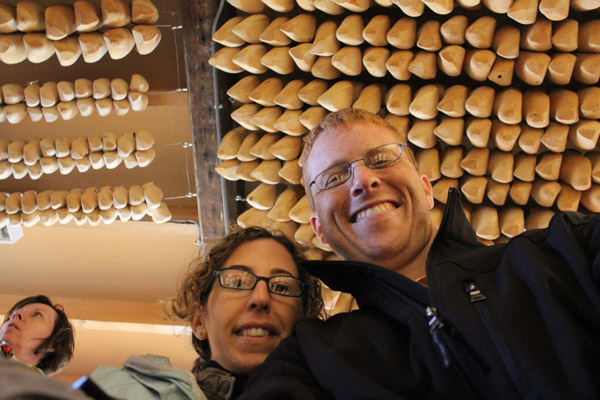
The product of a wooden shoe demonstration.
Few symbols of the Netherlands are more beloved than the wooden shoe. The Dutch used their beloved clogs to tramp across the globe, in many cases stomping on indigenous populations until their wooden shoes split. That's when the indigenous people had them, because wooden shoes are tough to replace quickly, and it's much easier to overthrow your oppressor when your oppressor does not have proper footwear.
The town of Markham is a short ferry ride across the IJsselmeer; it is also a very quaint village with a nice little harbor, and one very specific store. After a 15-minute demonstration of shoe-making, you will have 45 minutes to buy wooden shoes.
Windmills
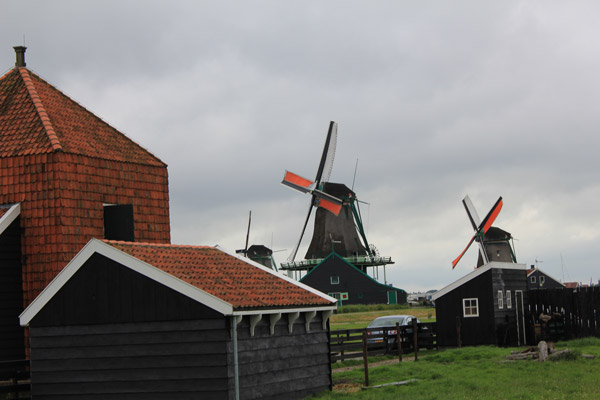
Even better than the windmills of your mind.
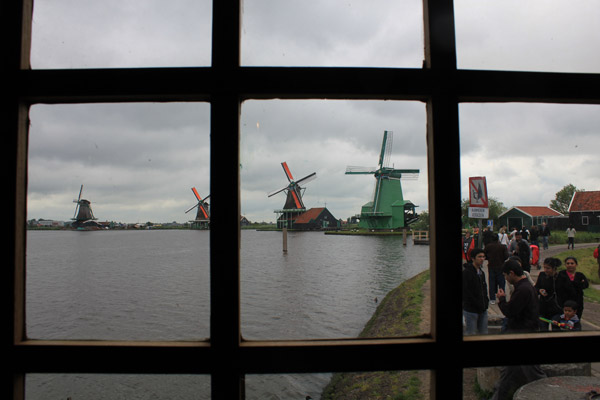
A drainage system AND a labor-saving farm device, all in one!
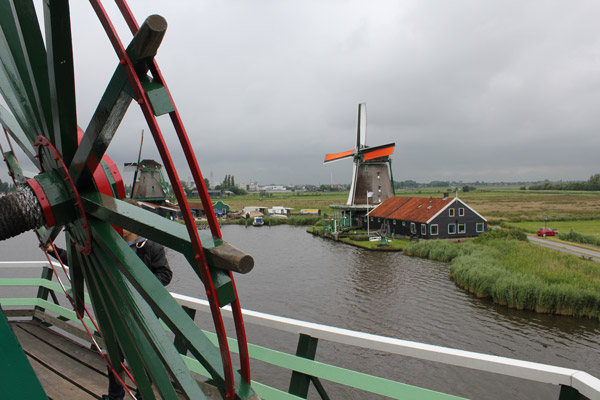
For the Don Quixote in all of us.
The final stop on your cultural tour will likely involve windmills. These stately, romantic structures are more than scenic -- they are the workhorses of Dutch landscaping. Wind powered the mighty pumps that Dutch engineers used to reclaim huge swaths of land from the sea, creating farmland and allowing their people to flourish. With that land reclaimed, the windmills were used to crush grains, process dyes and probably torture those who dared cross the House of Orange.
Feel free to venture beyond the 15-minute demonstration windmill -- there is no store where you can buy a windmill, so you might as well take a short walk and see the nearby windmills which are actually a lot cooler and cheaper to visit.
Back in town: The Red Light District

The VoC Cafe, on the edge of the red light district.
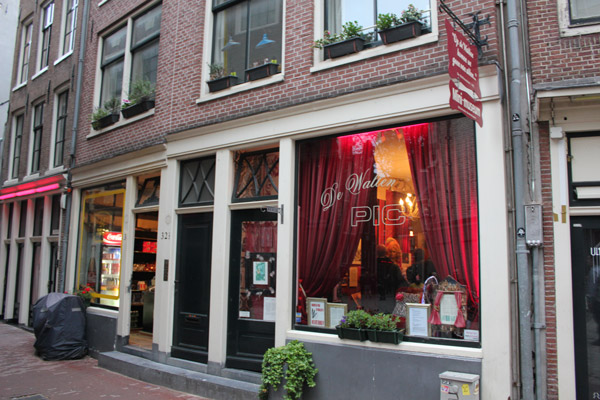
Learn about sex workers at the PIC.
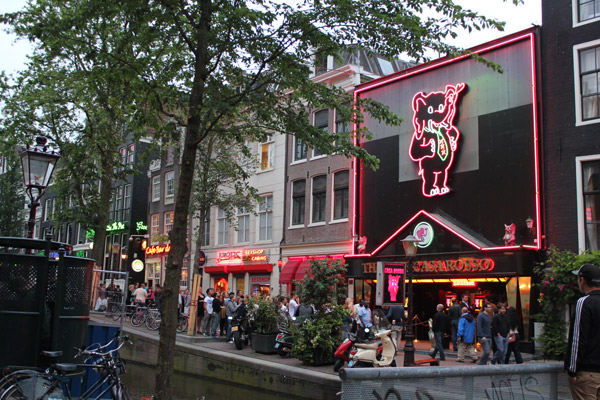
One of the sex clubs in the heart of the red light district.
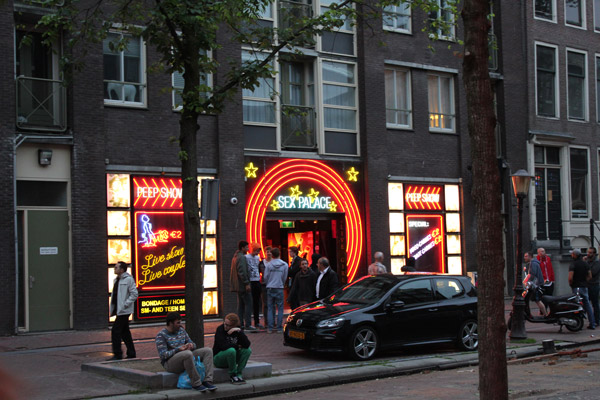
You gotta advertise.
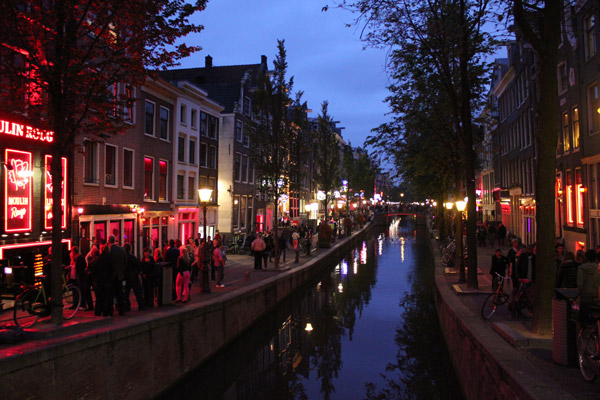
The canals of the red light district at night.
If your day is filled with touring the Dutch countryside, save your night for the famed Red Light District. The Dutch are perfectly candid about "De Wallen," the seedy underbelly of Amsterdam, where drug use and prostitution are welcome and open. There are many excellent guides who will introduce you to the customs and history of the area: The vice industry developed thanks to high demand from those arriving to or working in Amsterdam's nearby harbor.
There are still a select few windows where sex workers try to entice passersby into their "office." You can even hear a first-hand account of the sex trade at the "Prostitution Information Center," where retired prostitutes advocate for the safety of sex workers. One notable guide started her career at 16, to get the money to buy a German shepherd. Really.
YOU DID IT!
Congratulations! You absorbed all of Dutch culture in half a week. You could have done it faster if you used mind-expanding drugs, which is pretty much normal for Amsterdam. But this way, your memories don't involve bleeding spiders out of your eyes.

TRAVEL TIPS
Pickpockets. When traveling in Europe, it's important to remember that everyone is a pickpocket. All Europeans are trained from birth to master amazing feats of digital dexterity; no child is allowed to attend university unless they can first remove a wristwatch from a trained special operations soldier. While pickpocketing was once practiced only by criminals, gypsies and orphans, even regular citizens now lift wallets just to stay in practice. Furthermore, Europeans work as a seamlessly integrated team when attempting to pick a pocket. Anytime a European grazes against you or speaks to you, they are creating a diversion. In recent years there have been several documented incidences of tourists not only having their wallets lifted, but actually having a kidney removed while attempting to order coffee from a barista feigning a poor understanding of English. If possible, try to store all money and credit cards in your cheek pouches. Regardless, anticipate and plan for the theft of 80 percent of your life savings if your vacation lasts longer than a week.
Language. Europe is famous for its compact diversity. In a single day's drive, a visitor can pass through regions where four different primary languages are spoken. Locals appreciate a good-faith effort at speaking their native tongue, and most will allow you to stumble through 10-15 seconds of conversation before rolling their eyes and speaking English. On the rare occasions when the European you're dealing with does not understand or speak English, remember that they are stalling to assist the pickpockets removing your gold fillings. Trust no one.
Currency. Most nations of Europe use the euro, a currency distinguished by its depictions of nondescript buildings. They chose this, for some reason.
Eurorail. If you're traveling in and around the Netherlands, you'll want to buy and activate a Eurorail pass. Eurorail is the organization that coordinates rail travel throughout Europe; equipped with the right Eurorail pass, you can traverse the continent faster than the German army in 1939. European nations, particularly the German-speaking ones, are renowned for their bureaucratic efficiency. You can activate your pass after only 20 minutes in line and a brief discussion with a person who (judging by their facial expressions) wishes that America had lost World War II. Eurorail passes aren't necessarily cheap, and if you're traveling on a budget you might wonder if that's the best way to go. But don't worry about the expense: They're worth it. Passes can give you access to trains, light rail, ferries and countless other affiliated transit systems in the country you visit. They also allow you to experience the most enjoyable aspect of touring Europe: returning to America and droning on endlessly at dinner parties about how superior the European transit system is to America's.
